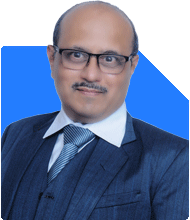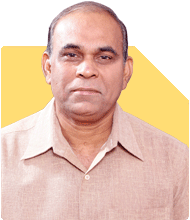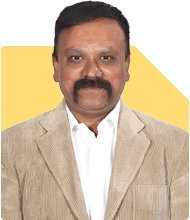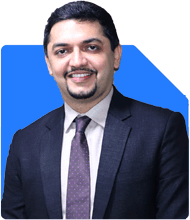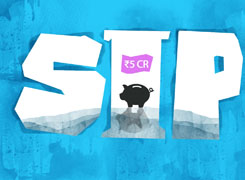43 Years Old, Monthly Income of Rs.2 Lakhs, Financial Assets of Rs.5 Crores - Can I Retire at 49?
Ramalingam Kalirajan |10872 Answers |Ask -Follow
Mutual Funds, Financial Planning Expert - Answered on Aug 13, 2024
He has an MBA in finance from the University of Madras and is a certified financial planner.
He is the director and chief financial planner at Holistic Investment, a Chennai-based firm that offers financial planning and wealth management advice.... more

I am 43 years old. Monthly salary at 2 lakhs. Two Daughters in 4th & 5th Grade. Monthly SIP of 32k, PPF 5k, SSA 7k, Gold chit - 15k, Mutual funds of 6 lakhs, PPF of 7 lakhs, SSA - 3.5 Lakhs, stocks(Large cap) - 4.8 Lakhs, Rental income -23k, Real estates Assets - vacant land 50L worth, Family property share - 1.5cr, individual house worth 1.3Cr. Last but not least liability 16 Lacs House loan Retirement at the age of 49 is possible with monthly income of 2 lakhs with Financial asset worth 5 Cr. Please advice
At 43, you have a commendable financial portfolio. Your monthly salary is Rs 2 lakhs. You are investing in various financial instruments. Your current assets include mutual funds, PPF, SSA, large-cap stocks, and real estate. You also have a rental income of Rs 23,000.
Your key assets:
Mutual funds: Rs 6 lakhs
PPF: Rs 7 lakhs
SSA: Rs 3.5 lakhs
Large-cap stocks: Rs 4.8 lakhs
Real estate: Rs 1.8 crore (vacant land and individual house)
Liability:
House loan: Rs 16 lakhs
Your goal is to retire at 49 with a monthly income of Rs 2 lakhs and financial assets worth Rs 5 crore. Let’s evaluate how to achieve this.
Evaluating Current Investments
Your investments are diversified across different asset classes. This is a good strategy for balancing risk and returns. However, we need to ensure these investments align with your retirement goal.
Mutual Funds: You have Rs 6 lakhs invested in mutual funds. Increasing your SIPs will help you accumulate wealth faster. Actively managed funds might provide better returns than index funds, especially in volatile markets.
PPF and SSA: These are safe investments with guaranteed returns. However, they have a lock-in period and might not provide the high returns needed to achieve your Rs 5 crore goal. You should continue investing in them for their tax benefits and security, but consider directing more funds towards higher-growth investments.
Stocks: Your investment in large-cap stocks is a strong component of your portfolio. They offer good growth potential. You may consider adding mid-cap and small-cap stocks to diversify further.
Real Estate: While real estate is a valuable asset, it is not very liquid. The focus should be on financial assets that can generate steady income during retirement.
Setting a Retirement Strategy
Given your goal to retire at 49 with Rs 5 crore in financial assets, we need to create a focused strategy.
Increase SIPs: Consider increasing your SIPs to Rs 50,000 per month. This will significantly boost your mutual fund corpus over the next 6 years. Focus on equity-oriented mutual funds with a mix of large-cap, mid-cap, and small-cap funds.
Reassess Gold Investments: Gold is a good hedge against inflation, but it doesn’t generate regular income. You might consider reducing your gold chit contribution and redirecting those funds into equity mutual funds.
Reduce Debt: Your Rs 16 lakh house loan is a liability. It’s essential to pay this off before retirement to reduce financial stress. Consider using part of your rental income or bonus payments to clear this debt faster.
Build an Emergency Fund: Ensure you have a sufficient emergency fund, ideally covering at least 12 months of expenses. This will protect your investments from being liquidated in case of unforeseen expenses.
Focus on Growth Assets: To achieve Rs 5 crore in financial assets, a significant portion of your portfolio should be in growth-oriented investments like equity mutual funds and stocks. These assets typically offer higher returns, though with higher risk.
Consider a Retirement Corpus Strategy: You need to accumulate Rs 5 crore by the age of 49. This means an annual growth rate of around 12-15%. Diversifying your portfolio with a mix of high-return mutual funds and stocks can help achieve this.
Ensuring a Steady Retirement Income
Your goal of Rs 2 lakh monthly income during retirement is achievable with a proper withdrawal strategy.
Systematic Withdrawal Plans (SWP): Once you retire, consider using SWPs from your mutual funds to generate regular income. This will provide a steady cash flow while allowing your investments to grow.
Diversified Income Streams: In addition to SWPs, maintain a mix of PPF, fixed deposits, and bonds for secure, guaranteed income. Your rental income will also contribute to your monthly cash flow.
Healthcare Planning: As you approach retirement, ensure your health insurance covers potential medical expenses. Consider increasing your cover if needed, as healthcare costs tend to rise with age.
Final Insights
You are on the right track with your diversified investments. However, to meet your retirement goals, a few adjustments are needed:
Increase SIPs: Boost your mutual fund SIPs to Rs 50,000 monthly.
Reduce Debt: Pay off your Rs 16 lakh home loan before retirement.
Focus on Growth: Prioritize equity mutual funds and stocks for higher returns.
Plan Withdrawals: Use SWPs for steady retirement income.
Reassess Gold: Redirect some gold investments to equities.
Maintain Emergency Fund: Ensure at least 12 months of expenses are covered.
With these strategies, you should be well-prepared to retire at 49 with Rs 5 crore in financial assets and a monthly income of Rs 2 lakhs.
Best Regards,
K. Ramalingam, MBA, CFP,
Chief Financial Planner,
www.holisticinvestment.in
You may like to see similar questions and answers below
Ramalingam Kalirajan |10872 Answers |Ask -Follow
Mutual Funds, Financial Planning Expert - Answered on Jun 21, 2024
Ramalingam Kalirajan |10872 Answers |Ask -Follow
Mutual Funds, Financial Planning Expert - Answered on Jun 21, 2025
Ramalingam Kalirajan |10872 Answers |Ask -Follow
Mutual Funds, Financial Planning Expert - Answered on Jul 10, 2025
Nitin Narkhede | Answer |Ask -Follow
MF, PF Expert - Answered on Jul 02, 2025
Radheshyam Zanwar |6736 Answers |Ask -Follow
MHT-CET, IIT-JEE, NEET-UG Expert - Answered on Dec 06, 2025

Good luck.
Follow me if you receive this reply.
Radheshyam
Dr Nagarajan J S K |2576 Answers |Ask -Follow
NEET, Medical, Pharmacy Careers - Answered on Dec 06, 2025
Mihir Tanna |1090 Answers |Ask -Follow
Tax Expert - Answered on Dec 06, 2025
Ramalingam Kalirajan |10872 Answers |Ask -Follow
Mutual Funds, Financial Planning Expert - Answered on Dec 06, 2025
Radheshyam Zanwar |6736 Answers |Ask -Follow
MHT-CET, IIT-JEE, NEET-UG Expert - Answered on Dec 06, 2025
Radheshyam Zanwar |6736 Answers |Ask -Follow
MHT-CET, IIT-JEE, NEET-UG Expert - Answered on Dec 06, 2025
Radheshyam Zanwar |6736 Answers |Ask -Follow
MHT-CET, IIT-JEE, NEET-UG Expert - Answered on Dec 06, 2025
Dr Dipankar Dutta |1837 Answers |Ask -Follow
Tech Careers and Skill Development Expert - Answered on Dec 05, 2025
Dr Shyam Jamalabad |108 Answers |Ask -Follow
Dentist - Answered on Dec 05, 2025
Dr Shyam Jamalabad |108 Answers |Ask -Follow
Dentist - Answered on Dec 05, 2025











